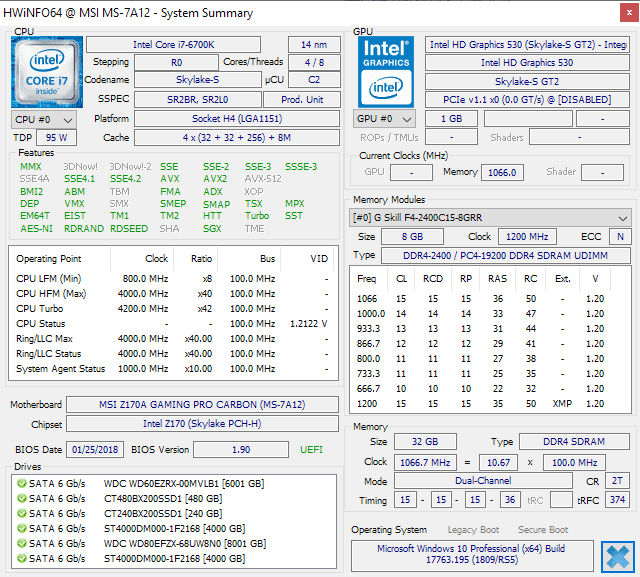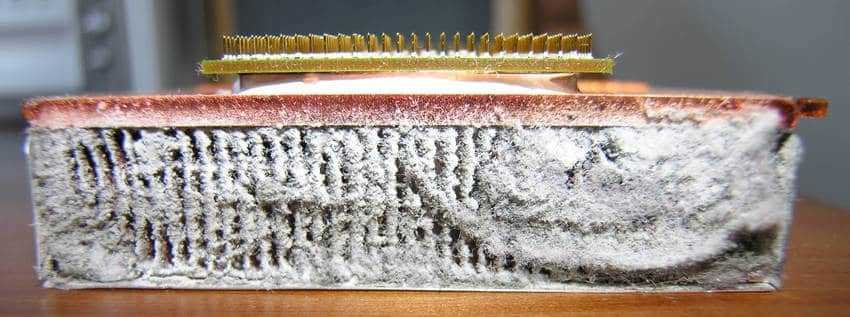In this article we will deal with heat-conducting paste and its properties. Because it is necessary in every computer, how it works, how it is applied and many other dark spots of this strange material.

Most users when building a PC do an incredibly deep search for the processor, graphics card and RAM and just pass over the thermal paste as a necessary but standard thing. However, thermal paste is vital to the health of your computer. Without good quality paste, your computer won't stay alive for long! Let's look at this material more closely. This article is aimed at beginners, so advanced users will forgive us for the exaggeration analysis.
What is a heat-conducting paste?
Η heat-conducting paste is a substance applied between the processor and the heat sink. You can buy it in small tubes in online stores, which are sometimes accompanied by a small tool that looks like a small spatula.
The role of the heat-conducting paste is to help transfer heat and remove it from the CPU to the heat sink. The heatsink then dissipates heat to the environment through air (or water). This process keeps the CPU at low temperatures, especially when performing difficult and overloaded processing tasks.
When setting up a computer with your hands, along with all the basic materials (motherboard, cpu, heatsink, etc.) you will need a tube of heat-conducting paste so that in the end your computer will work smoothly. Some CPU coolers have their own pre-applied paste so you can install it right away. Their existence is usually indicated by the term "stock thermal paste". Others do not, so you will need to put.
How does heat-conducting paste work?
CPUs produce a lot of heat, so it is important to eliminate this heat as quickly as possible. Unfortunately, fresh air does not make the best heat transfer, so there should be as little air as possible between the CPU and the heatsink. The heatsink sits on the CPU and with a clamping system constant pressure is exerted from the heatsink to the CPU head.
This constant contact of the two materials is not perfect and usually traps tiny air pockets. After all, both the CPU and the heat sink surface are not perfect and have small grooves and gaps. If not properly sealed, these gaps allow air to flow between the processor and the heat sink, reducing the heat transfer efficiency between the two.

The issue comes to solve the heat-conducting paste. Not only is it a very good conductor of heat, but it can get into these small gaps and grooves in the surfaces of both materials. This creates an airtight seal and increases the rate of heat transfer.
This paste remains in a malleable form for several years. But over time it dries and hardens. Dryness reduces its efficiency and causes the CPU to start to slow down. This is why experts recommend re-applying the heat-conducting paste at regular intervals to prevent the computer from overheating.
Do you need heat-conducting paste?
Some of you may think that it is not so necessary. Of course the computer will boot without this hardware, but the problem is whether it will stay alive while using it!
Without the heat-conducting paste, there will be no optimal heat transfer between the CPU and the heat sink. Therefore, the CPU will heat up very quickly, in the end it will overheat and very soon you will see blue monitors and accidental abrupt shutdowns. If you insist on operating it under these conditions, you will surely lose your processor once and for all.
Although buying thermal paste is the least exciting part of building a computer, it is essential to its life. It allows the heat sink to do better its work and protects the computer from shutting down and burning.

If you are afraid or do not get your hands dirty to properly apply the heat-conducting paste on your new processor, then buy a cooler with pre-applied paste. It may not be the top heat-conducting material, but it makes it easier to install.
Do I need to replace the paste already on my computer?
Under normal circumstances, the paste applied by your computer manufacturer after four years will begin to age. It depends on its quality, the correct first application and the way the computer is used. The trigger that will make you change the paste is if you see changes in CPU temperature.
For how to see what temperature your processor is at any given time, see our article ή this.

The normal temperatures of a processor depend on its make, architecture and model. For yours, refer to its manual. Processors generally raise the temperature when "forced". This happens in games, mining and serious video editing. If you use your own pc for documents, surfing and watching movies, chances are the paste will not dry out even after 10 years.
But if you see high temperatures, it would be good to first do a cleaning and if it continues to heat up change his paste.

Carefully remove the heat sink above the CPU (see in your manual how the heat sink comes out of the socket). Thoroughly clean the old paste with a cotton swab and isopropyl alcohol and finally apply the new paste.
How to apply heat-conducting paste?
Given its importance in the life of the computer, there is always the concern of its proper implementation, as well as what is the most appropriate way. If you search the internet a little, you will find theorems, strategies and tips for its application. The video above shows a variety of application methods.
The simplest method of application is to place a pea-sized drop in the middle of the processor. Then connect the heatsink to the processor, applying equal pressure to all four corners. This ensures that the pressure paste is spread and evenly distributed over the contact surface.
If you were given a spatula along with the paste then you can use it to spread it evenly. Some people prefer this method to ensure that the spread is perfect before tightening the heat sink on the processor. Alternatively instead of a spatula you can use your finger, but wearing a plastic glove.
Other ways are to paste an X-type design or put three small lines or a circle, or two lines, etc. Basically, if your cpu is not elongated, the design does not matter and all you have to do is It is interesting to apply an even film of paste everywhere. The original design with or without a spatula is rather a psychological issue. Prefer what calms you down.
Regardless of the method you choose, it is important that there are no bubbles or gaps in the paste. Also the paste remains wet and applies just as well even if you take out the heat sink to see how it spread and then put it back in place. Do not be afraid to do it.
Also do not be afraid to remove the heatsink from an old pc and if you see that the paste is still wet, replace it without replacing it. It will apply just fine.
Finally because some pastes contain minerals data for better thermal conductivity, unfortunately they are good conductors of electricity. In these you don't want it to overflow and go to the side of the processor or the motherboard. The consequences will be disastrous. Pastes that are not electrically conductive are referred to as "non electrically conductive". Also watch out for those that are not clearly non-electrically conductive and state that they are "slightly capacitive". In them there is the possibility of current passing, under certain conditions.
What is the best heat-conducting paste?
Choosing the best heat-conducting paste is a very difficult task. If you ask ten experts they will give you ten different opinions on which one works best for them. However, you can choose the best brands by looking at the test results of various technical journals or relying on the following simple: the more expensive the better.
Our experience states that cheap pastes of about 0,30 euros per gram are literally for crying, while a paste with an average price of around 2 euros per gram is quite satisfactory.

The expensivebetter pastes on the market, which you can find even for 6 euros per gram, yes, they do something more, but this something in no way justifies their big price difference. Prefer one medium price - quality and you will be fine.
Keeping your computer cool
While heat-conducting paste is not required to start a computer, it is very useful in keeping temperatures low. Therefore, it should always be installed when building a computer. This paste should be replaced when you see high temperatures on your computer and if cleaning does not work.





